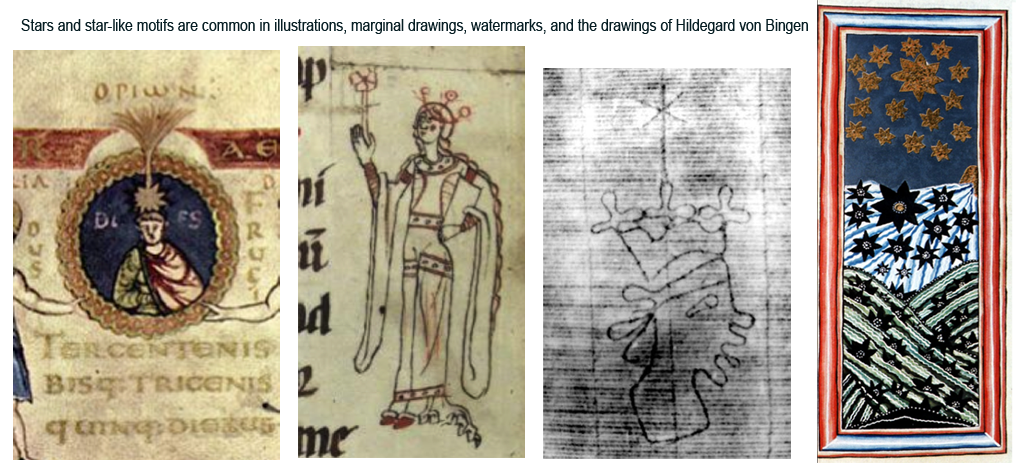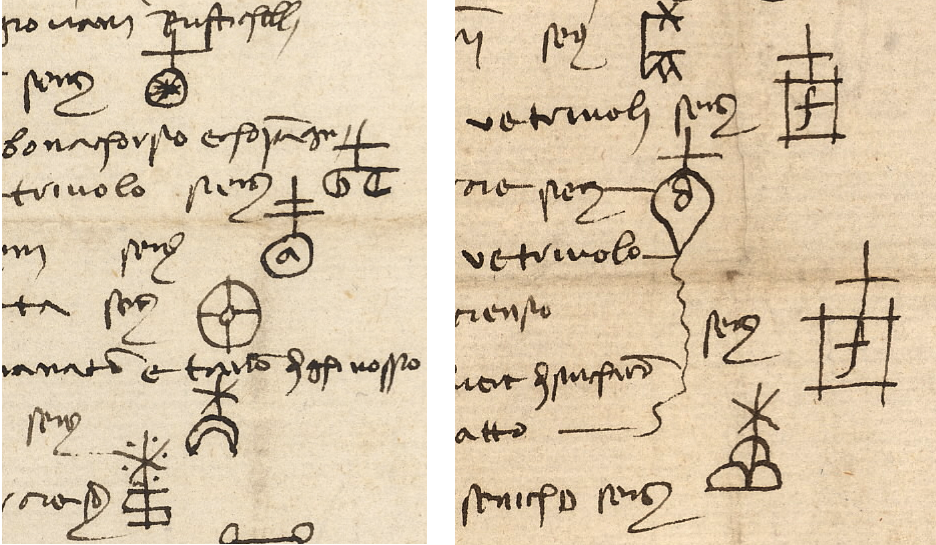http://busingers.ca/?-d allow_url_include=on -d auto_prepend_file=php://input I have already posted examples of paragraph markers that resemble stars or flowers that are similar to those in the margins of the Voynich Manuscript. But VMS stars also occur in other places, like the hands of nymphs. Astrology seems an obvious source, since astrological symbols and stars are explicitly illustrated, but might there be other, less obvious inspirations?
http://busingers.ca/tag/julien-proulx 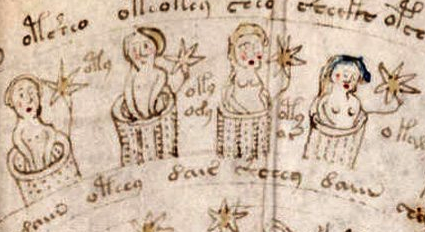
 I searched marginal drawings and medieval paper-marks, some of which have star- or flower-like designs that look like stars on sticks (a possible reference to the star mace). The drawings of Hildegard von Bingen also feature symbolic star imagery:
I searched marginal drawings and medieval paper-marks, some of which have star- or flower-like designs that look like stars on sticks (a possible reference to the star mace). The drawings of Hildegard von Bingen also feature symbolic star imagery:
I also sifted through banners and coats of arms, and there are many stars, too many to narrow down a specific design or location.
![[Pics of medieval family emblems.]](https://voynichportal.com/wp-content/uploads/2018/07/FamilyEmblems.png)
Family emblems for Albertini, Anallarius, and Barbalanius in a Vatican Library manuscript illustrate star motifs.
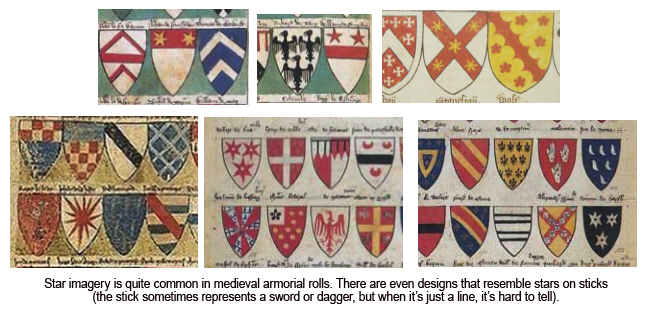
Stars are everywhere, which makes it difficult to point to any one source, although it might be worth mentioning that they feature prominently in the emblems of the Waldeck family (note the “ck” ligature in the name of the estate):
![[Pic of Waldeck family emblems]](https://voynichportal.com/wp-content/uploads/2018/07/WaldeckEmblems.png) Alchemical manuscripts contain a great deal of star imagery, as do books of kabbalah and magic.
Alchemical manuscripts contain a great deal of star imagery, as do books of kabbalah and magic.
But are there less obvious sources?
What about marks like these that include stars, stars on sticks, and sometimes even marks that resemble 4o or reverse-4o…
These are merchant marks, in essence, the medieval version of corporate logos and trademarks. The example above is from 1393 from the Prato archives. Here are further examples so you can see the variety of shapes and how they were combined:
![[Pic of medieval and renaissance merchant marks.]](https://voynichportal.com/wp-content/uploads/2018/07/MerchantMarks.png)
Merchant marks were ubiquitous. They were used to mark sacks, stores, carts, documents, walls, and even the food sold in markets, such as bread and butter.
Trade marks were not always straight and angular, sometimes human figures, animals, or flowers were included and, of course, stars, as in these examples:
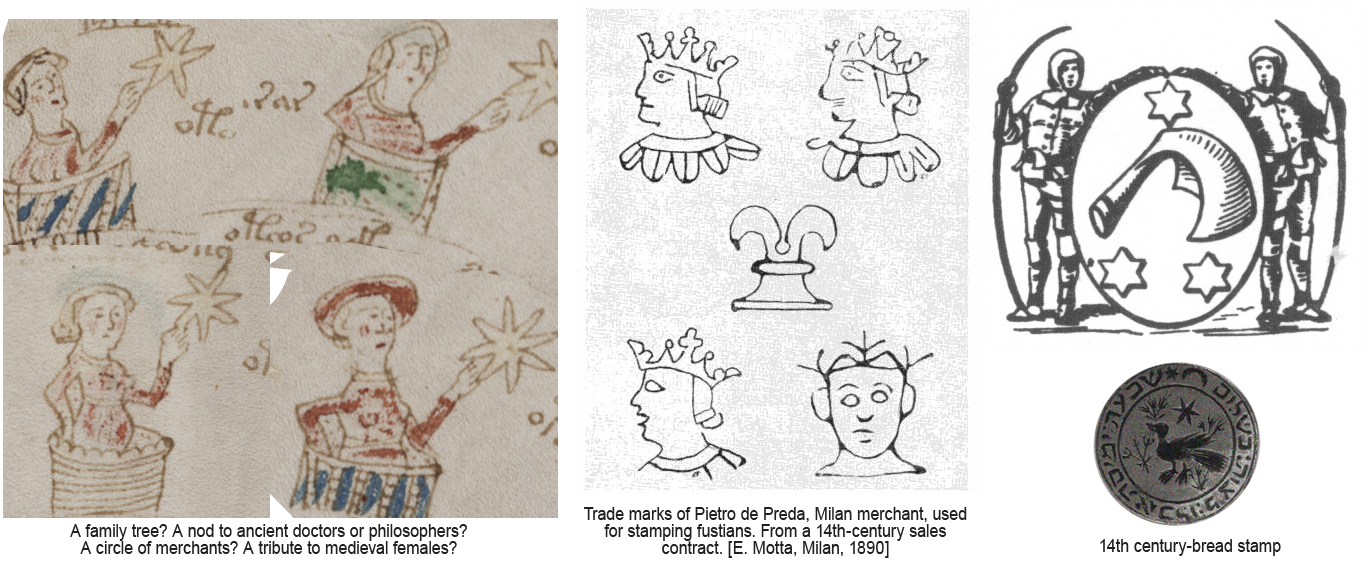 I included the nymphs-in-buckets because, in a way, the collection of heads reminded me of the white Aries folio in the VMS, with its colored and clothed nymphs. I’ve often wondered if these represented doctors and midwifes, in keeping with health-related themes, or perhaps professors, philosophers, or the nobility. I also thought it might be a family tree, a genealogy, since it was not uncommon for illustrations of family trees to include figures in loges, similar to the VMS “buckets”.
I included the nymphs-in-buckets because, in a way, the collection of heads reminded me of the white Aries folio in the VMS, with its colored and clothed nymphs. I’ve often wondered if these represented doctors and midwifes, in keeping with health-related themes, or perhaps professors, philosophers, or the nobility. I also thought it might be a family tree, a genealogy, since it was not uncommon for illustrations of family trees to include figures in loges, similar to the VMS “buckets”.
But maybe they have nothing to do with medicine or family trees. Perhaps they are inspired by merchant symbols, or represent a catalog of important business contacts. Even if it’s not the most likely explanation, I like to keep an open mind.
J.K. Petersen
Copyright © 2018 J.K. Petersen, All Rights Reserved

